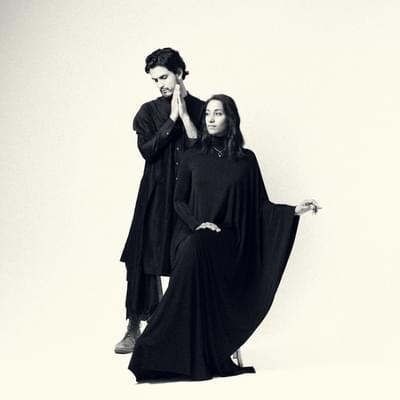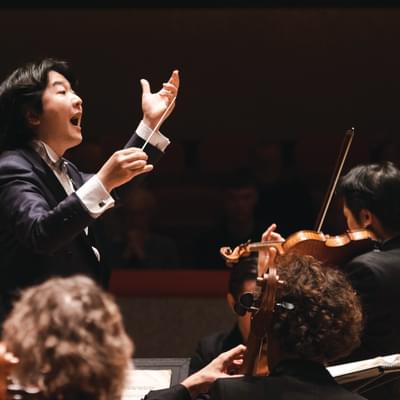Kazuki conducts Verdi Requiem

Full programme
- Verdi, Requiem (83mins)
Performers
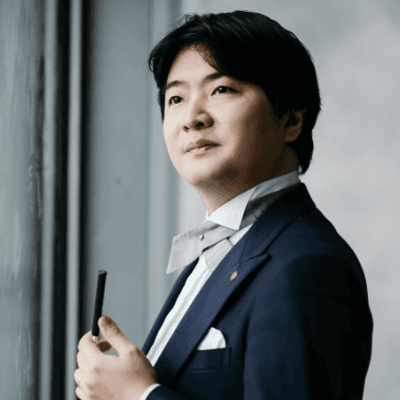
Kazuki Yamada
Conductor
Evelina Dobračeva
Soprano
Karen Cargill
Mezzo-Soprano
Jose Simerilla Romero
Tenor
Ashley Riches
Bass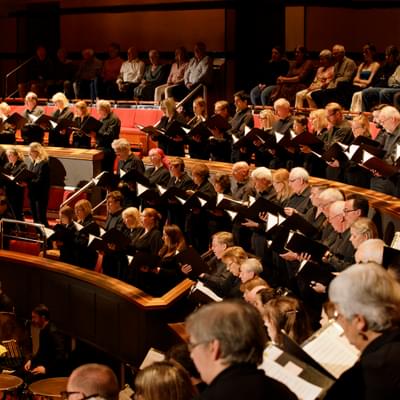
CBSO Chorus
Programme Notes
© Richard Bratby
The choirboy and the curse
Giuseppe Verdi liked to tell a story about his relationship with the Catholic Church. As a child in the Italian village of Le Roncole, he’d been serving as an altar boy in church when – distracted by some piece of sacred music – he lost track of the service. Infuriated, the priest slapped him, sending him reeling down the altar steps. “May God strike you with lightning!” muttered the young Giuseppe. A couple of years later, in September 1828, lightning did indeed strike the nearby church of La Madonna del’ Prati during a festival service, killing two dogs and six people – among them the very priest whom Verdi had cursed in Le Roncole.
Whether or not the agnostic Verdi truly saw this as anything more than a macabre coincidence, the fact that he told the tale at all illustrates his relationship with organised religion. Verdi was a liberal and a patriot in an era when the Church seemed to be holding Italy back, and he practised what he preached: living out of wedlock with his future wife Giuseppina. But although he rejected the Church, he did not reject faith. He asked to be buried with “one priest, one candle, one cross”.
National heroes
Still, Verdi’s decision to compose a Requiem Mass was unquestionably more patriotic than religious. Gioachino Rossini died on 13 November 1868, and for Verdi it marked the end of an era: “A great name has disappeared from the world…a glory of Italy”. He conceived the idea of a musical monument: a Requiem, to be created jointly by Italy’s greatest living composers and performed in Rossini’s home town of Bologna on the first anniversary of his death. The idea of this Messa per Rossini caught on and Verdi himself wrote a movement: the Libera Me. Then local politics intervened and the moment was lost. The Messa per Rossini would not be heard until 1998.
But Verdi held on to his Libera Me, and when in May 1873 the Italian patriot and novelist Alessandro Manzoni died, its moment seemed to have come. Verdi revered Manzoni: “I would have knelt before him, if men could be worshipped”. Now he wrote to his publisher Ricordi:
I too would like to demonstrate what affection and veneration I bore and bear to that Great Man who is no more, and whom Milan has so worthily honoured. I would like to set to music a Mass for the Dead to be performed next year on the anniversary of his death…If you believe this possible, speak to the Mayor about it.
The Mayor of Milan agreed and Verdi set to work, using the existing Libera Me as the final section of this new “Manzoni Requiem”. The premiere took place in the church of San Marco in Milan on 22 May 1874, with four soloists whom Verdi knew and admired from the opera house. Teresa Stolz (soprano), Maria Waldmann (mezzo-soprano) and Ormondo Maini (bass) had all sung in the premiere of Aida in 1872 and the tenor Giuseppe Capponi had been Verdi’s original choice for Radamès, the hero of Aida. The performance was officially a religious service – a priest officiated and the female singers were required to wear black veils. Three days later, Verdi conducted the entire Requiem at the opera house of La Scala.
An opera for the church?
While the Messa da Requiem was wildly successful in Itay, the German critic Hans von Bülow called it an “opera in ecclesiastical vestments”. Johannes Brahms, on the other hand, disagreed: “Only a genius could create such a work”. True the Messa da Requiem can certainly feel intensely dramatic. That was Verdi’s nature, and text of the Requiem is a libretto of sorts – words rich in colour, incident and emotion, all waiting to be expressed in music. The orchestra includes a piccolo, four bassoons, eight trumpets (including four offstage) and an ophicleide – the predecessor of the modern tuba.
But Verdi avoids turning the soloists into characters. Instead, the music constantly shifts perspective and tone, sometimes inhabiting the text, at other times standing outside the action like a narrator. And with no need for singers to make dramatically plausible entrances and exits, Verdi is free to combine them as and how he pleases – none of his major works is so rich in ensembles. An old stager like Verdi knew that there was a limit to what an opera chorus could memorise. No such limits apply in concert, however, and he lets his genius for choral writing take wing like never before.
Words and music
At no point, however does Verdi respond to his sacred text with anything less than sincerity. In that crucial respect, the Requiem really does resemble an opera: it strikes immeasurably deeper when you are aware of the words and their meaning:
Introit and Kyrie
Low, muted strings accompany the mournful opening Requiem aeternam; opening out into radiant hope at the Kyrie.
Dies Irae
Verdi paints the Day of Judgement in a chorus worthy of Michelangelo or Dante.
- Tuba Mirum: Offstage trumpets sound the call to judgement. The bass solo takes up the sombre narrative.
- Liber scriptus: The orchestra vividly illustrates the mezzo’s awestruck narration.
- Quid sum miser: A bassoon nags anxiously, as three voices contemplate their guilt before Judgement.
- Rex tremendae: Awe-inspiring outbursts struggle with a gentler, gradually rising plea for divine grace.
- Recordare: To a gently rocking accompaniment, mezzo and soprano lay their appeal before Christ.
- Ingemisco: The tenor cries out from the silence: a sinner prays for mercy.
- Confutatis: The bass contemplates damnation. The Dies Irae chorus crashes back in, with renewed terror, and gradually fades.
- Lacrymosa: All that is left are tears: a sobbing processional, not unlike the equivalent movement in Mozart’s Requiem.
Offertory
- Domine Jesu Christe: The terror of judgment has passed: the soloists sing amid an atmosphere of quietly blossoming hope, sweetened by solo violins.
- Quam olim Abrahae: An ancient promise, set by Verdi to music reminiscent of baroque counterpoint.
- Hostias: The spirit, not the letter, of ancient church chant: followed by a return to Quam olim Abrahae, and a quiet vision of bliss.
Sanctus
Trumpets sound: a jubilant, brilliantly-scored chorus. Verdi added an exclamation mark at the end of the first line of text.
Agnus Dei
A superficially artless, chant-like melody. Woodwinds delicately brighten and garland its central sections.
Lux Aeterna
Shimmering violins provide the “eternal light” here. Bass, brass and an ominous drumroll throw shadows across the scene as the soloists reprise the words Requiem aeternam. The vision dissolves amid gently cascading woodwinds.
Libera Me
Anxiously, amidst a restless, responsive orchestra, the soprano pleads once more for mercy.
- Dies Irae: For a third time, the vision of terror roars out – and gradually fades from memory.
- Requiem aeternam: A distant memory of the opening, as the soprano prays over a hushed unaccompanied chorus, and soars upwards.
- Libera Me: The air shivers: the soprano declaims and Verdi launches into a colossal closing chorus, punctuated by mighty orchestral chords. The soloists’ voices break through the action: and finally, as the epic vision recedes, they’re left standing amid falling phrases, pleading to be spared. The chorus has the final word: not affirmation, but a final whispered plea.
Downloads List
Celebrating Chorus@50 this Season...
What's on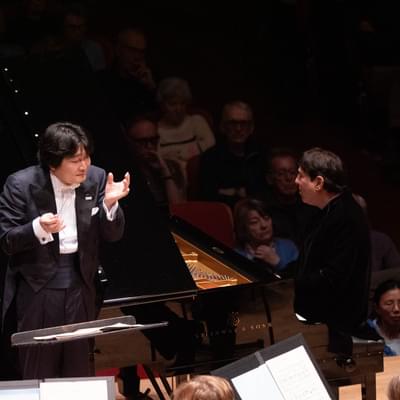
Kazuki conducts Ravel & Poulenc
